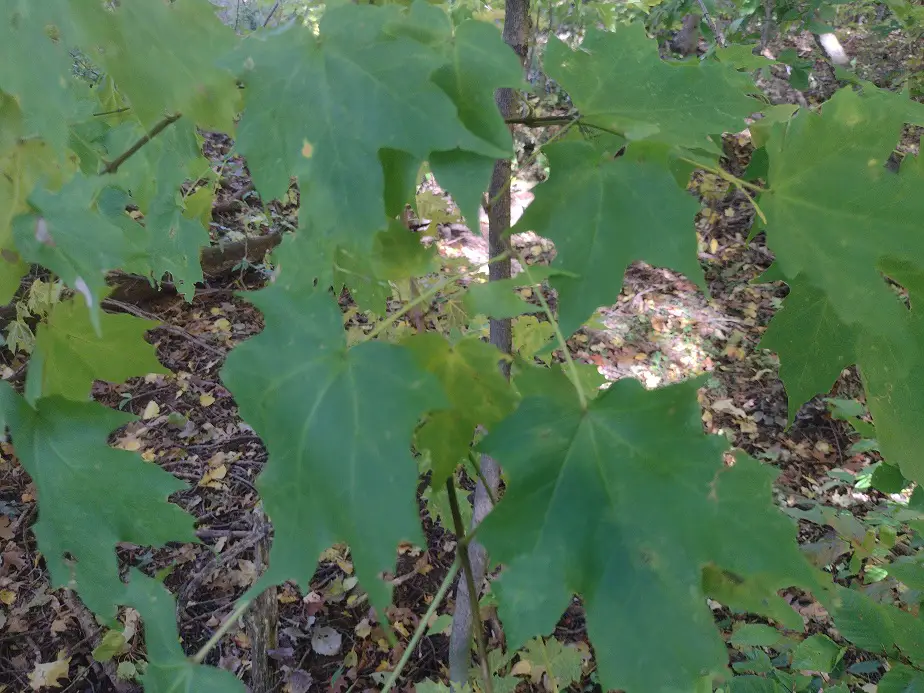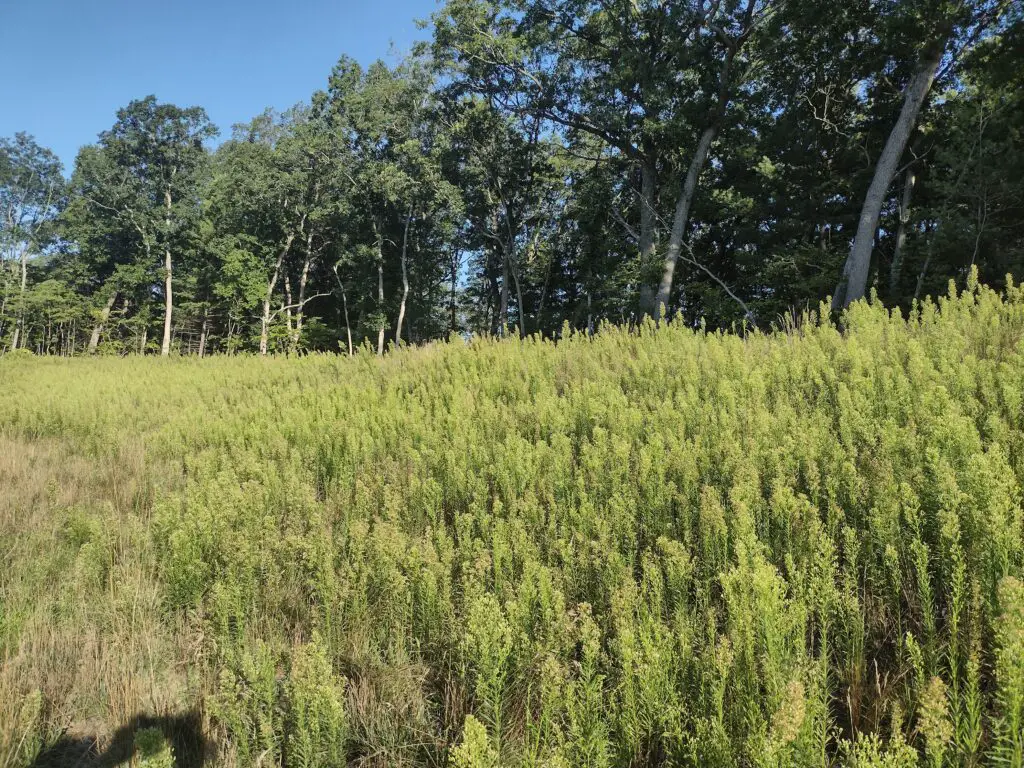These are the considerations I made about keeping animals in my woods.
Pigs, goats, cows, and rabbits do well in wooded areas. Pigs and rabbits require shade and benefit from the cover of trees. Pigs like to root up worms and nuts under the leaf cover. Goats and cows will eat low-growing browse and can do well on it if there’s a lot of undergrowth in a wooded area.
That covers the bases pretty well. It really depends on the animals you want to raise. let’s talk about it.
Raising Animals in Woodland Pasture
You can raise any farm animal in a wooded area. I keep pigs and rabbits in my woods because they both benefit so much from their shade. I have lost fine specimens of both due to sunstroke and don’t want to experience that again. The rabbits are just in regular wire cages, but the pigs roam.
My pigs absolutely love being in the woods over the warm season and into the fall. They eat the low-growing green leaves, root around for acorns, and collect leaves and twigs to make their nests. Pigs are 100 percent at home in the woods. They especially love the fresh acorn season.
Grazing or browsing animals will gain some feed value from the low-growing undergrowth and fallen food crops like acorns and crabapples. Most woodlands are fairly low in functional grazing feed, but many are feed rich in the fall or late summer.
The type of woodland you have, the trees and their maturity, and the way you manage it all influences the carrying capacity of a woodland pasture area. Mast trees, any tree with fruit or nuts, add incredible feed value to a woodland pasture, but usually only for a short while. Mast trees produce high-energy and high-calorie fodder, which is awesome for most any farm animal.
If you have multiple types of mast trees, the wild food crop will naturally be stretched over a longer period. Roaming livestock will make use of pretty much any tree nuts or fruits in your area. Some people actually plan out and plant a pasture woodland to feed animals.
My woods is largely poplar, red maple, and red oak. There are a few hawthorn and beech here and there. During a good mast year, the oaks will drop more than my pigs can eat in the fall, but the last few years, the invasive. leaf-eating Gypsy moth caterpillar has taken a serious toll on them.

Which Trees are Toxic to Animals?
Oak, Red Male, and Wild Cherry can have toxicity issues with certain animals in the right conditions. Old, fallen leaves pose no risk. Freshly fallen Red maple,
Oak Leaves and acorns, when green, can pose a risk of toxicity if eaten in large quantities. Cows and Sheep are more prone to it than other animals. Greem growtgh of most oaks contain toxins that can throw off the digestion enough to cause severe gastric issues.
It’s consideded dangerous when they make up 50% or molre of an animal’s diet. Usually, it happens more in the spring, when the leaves are still small. They’re stronger then. Mature acorns and brown, fallen leaves seem to pose no risk.
Red Maple leaves are toxic to horses only, and only when they first turn red and fall down. The toxicity is gone after a few weeks. The active compound has not been identified, but it is known to cause the hemoglobin in horses’ blood to break down and not carry oxygen, it is deadly.
Wild Cherry contains some compounds that if mixed properly, can form a prussic acid. Prussic acid, when metabolized, has the potentioal to form small amounts of a cyanide conmpound. According to Michigan State University, it’s only a concern with wilted green leaves.
According to the university report, wilted leaves may have weakened cell structures enough to allow these two compounds to come together and ultimately form the prussic acid. It’s primarily the metabolism in cows that poses a risk with wilted Wild Chery leaves. Brown, fallen leaves seem to pose no concern.
I feed fresh Wild Cherry leaves, in moderation, to my pigs and rabits without an issue.

Woodland Pasture vs Open Pasture
Woodland pasture is usually 10 to 20 times less feed-rich than open pasture land. If you can hold 4 cows per acre (a common figure for decent pasture) you would probably need at least 2 or 3 acres per cow. It’s not uncommon to see a wooded pasture with a carrying capacity of 1 cow per 10 acres, or less.
Thick, mature forests tend to have little undergrowth and thus little browse for grazing animals. Younger forests have much more green grazing feed available to animals. If you’re woodland pasture is full of mast-producing trees, there is more feed value, but those are usually limited to late summer or early fall.
One old method of feeding cows, sheep, or goats in wooded areas was to utilize tree hay. That is, cut and feed the leafy tops of trees. If you’re cutting trees for firewood, felling them while the leaves are green will give animals some great, leafy, high-protein fodder.
In times of old, trees were often polled or trimmed short, so grazing animals could reach some of the leaves on their own. Freshly trimmed tree boughs filled with green leaves can be tightly bundled and saved as a quality winter hay option.
I actually have a long-term plan of planting a pig pasture of trees. I would plant, in rows to keep things manageable, a plot of hybrid oaks, chestnut, mulberry, crabapples, and a series of apple trees that ripen at different times.
Apple and mulberry trees, while not usually thought of as feed crops, are super productive and the fruit is very high in sugar. That would help pigs gain weight nicely. It would be important to keep the trees spaced apart somewhat and to trim them once in a while. Mulberry can get absolutely massive.
Woodland pasture can be very hard on fences, shelters, or other infastructure. Trees fall, large branched break off and crash down, stuff happens. If you have a wooded pasture area, be sure to check the fencing often. If the wooded area is small enough, consider running your fence outside the woods, in the clear.

